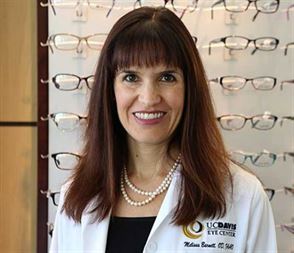Dr. Walt Whitley: Hi, welcome to the dry eye coach podcast. My name is Dr. Walt Whitley. Today. We’re excited to talk about a topic that we haven’t addressed before on Dry Eye Coach, which is addressing an unmet need Demodex blepharitis. We have the pleasure of having Dr. Bobby Azamian, co-founder, president and CEO of Tarsus Pharmaceuticals. Welcome Bobby.
Dr. Bobak Azamian: Thank you so much for having me, Walt. I really appreciate being on this with you.
Dr. Walt Whitley: Hey, well, we’re excited to hear about everything that’s going on within Tarsus. And so to start it off, can you tell us a little bit about yourself, Tarsus, and the work you’re doing to treat Demodex blepharitis?
Dr. Bobak Azamian: Yeah, my pleasure. So, I’m a doctor like you, originally. So I was a MD PhD, practicing internist, and I got captivated by the idea that I might be able to contribute to some new treatments and help develop some new treatments. And so, you know, my career has led me, over the last 15 years, to this point, in starting and building and leading Tarsus. And it’s just been a real privilege. We have, you know, a really, actually important, novel, and in a lot of ways, unconventional, treatment. And it’s great to be on this Dry Eye Coach with you because I think dry eye led us to think about blepharitis and specifically Demodex blepharitis. So what we’re doing at Tarsus is developing TP-03, which is a drug that has the potential to be the first FDA approved treatment for Demodex Blepharitis.
Dr. Bobak Azamian: And this is a disease as you know, where there is no good solution currently. So our mission at Tarsus has been actually to focus on, on unmet needs, starting with Demodex blepharitis, look deeply into the science, find a proven treatment, find and discover proven treatment, based on great science and great new technology. And then, hopefully revolutionize the treatment for patients with Demodex blepharitis, and then with other diseases. Demodex blepharitis is a really motivating disease to go after for me personally, and for our team, because it affects so many people. It affects up to 25 million Americans that suffer with this disease. So it’s an opportunity to make a real difference and have a significant impact.
Dr. Walt Whitley: Yeah. When it comes to Demodex, I mean, this is something that we see quite frequently in our clinic. And then, you know, we’ve heard about this for years, but we’ve had limited treatments that have been available to patients. And when we look at efficacy, I mean, the treatments, one of the things that we have to worry about is compliance as well. And having the patients actually do the various treatments that we have available. And as you mentioned, there’s a huge unmet need. Twenty-five million Americans do suffer from Demodex blepharitis. And so this is exciting that, you know, we have a potential treatment that is going to be able to address that. So can you speak to, why are we targeting Demodex blepharitis specifically? Because when we talk about ocular surface disease, I mean, that’s more than what, 35 million Americans. And so how did you get down to Demodex blepharitis?
Dr. Bobak Azamian: Yeah. Yeah, it’s a really serendipitous story. So, I co-founded the company with another entrepreneur who’d been in dry eye, named Michael Akkerman. He’d been, you know, looking at dry eye, seeing some of the abstracts and adjacent spaces and, and seeing these mites kept popping up at different conferences. And when we got together to found the company to go after a big problem, we looked together at really what was the correlation and causation of Demodex blepharitis. And we were astounded to see that really in the last decade, these long appreciated mites have been recognized to be more and more important. And actually that nearly half of all blepharitis cases were caused by Demodex mites, by Demodex mite infestation. So that got us focused on Demodex blepharitis specifically. Now, blepharitis as you know, and certainly Demodex has the same constellation of symptoms, really causes a burden to patients.
Dr. Bobak Azamian: So it’s a major disease of the eyelids, blepharitis, and it causes the eyelids to become red, irritated, and itchy, and can lead to some, some complications in terms of blurring of vision, including, um, missing or misdirected eyelashes, and generally involves inflammation of other eye tissues. And in particular, the cornea that can lead to some, some complications. So there’s a real need here. And, as you know, there’s just not a lot of great treatments for this. So we saw this as a really important opportunity. We also appreciated that it had a lot of overlap with conditions, like dry eye, and other conditions that eyecare doctors see all the time, including patients presenting for cataract surgery or those suffering from contact lens intolerance. So, that’s really why we went after Demodex blepharitis. Cause it was a clear subset of an important disease that had a lot of important overlap and complications with other diseases.
Dr. Walt Whitley: Yeah. You just mentioned cataract surgery. And I had a patient just yesterday that was asking me about her eyelashes, and she goes, “I don’t have them anymore.” I’m like, “Well, you didn’t have them to begin with.” And I go, “Remember when we talked about this before even [went to] cataract surgery, you mentioned the itch and where does it itch? Does it itch on the inner campus where that’s typically more of ocular allergy?” She goes, “No, it’s always itched along the eyelids.” And so that’s, you know, that’s a common symptom that we’re going to hear for patients that have blepharitis and Demodex blepharitis. And so thanks for sharing with that. So how can doctors identify patients in their office? And what are some of the things that you all have been looking at?
Dr. Bobak Azamian: So this was one of the real eye-opening things for me, coming into eyecare, and generally I think it’s been really a revelation to lots of eyecare doctors. You know, a lot of doctors, like you, had seen this, had been looking at the eyelid margin carefully, but a lot, I think, really bypassed the lid and went straight to look at the surface and the back of the eye. And, and so what we see in this disease, an opportunity to very clearly diagnose those at the slit lamp, which presents an opportunity really to just have the patient look down and look at that eyelid margin, that place that as you mentioned, patients are having that itchiness, and see something called a collarette, which is a type of dandruff also called cylindrical dandruff, that is actually a direct result of the mite overgrowth and infestation in the hair follicle of the eyelid. These can be seen at the base of the lashes and the upper lid. That’s the best place to see them. Just have patients look down and look at the lid margin under the slit lamp. And otherwise they can be easily missed. So it’s one of these signs hiding in plain sight for a disease that that’s a really important part of the eyecare population.
Dr. Walt Whitley: Yeah. Whenever we see those collarettes or cylindrical dandruff, but we’ll just call them collarettes just to standardize it. But whenever we see that, I mean, there was a study from Gao that mentioned, you see a Colorado a hundred percent of the time we’re going to find Demodex there. And definitely prevalent, if you see it, we have to do something about it. So tell me more, what is TP-03 and why do you think it can help these patients?
Dr. Bobak Azamian: Yeah, so in setting out to develop a treatment for this disease, our team went about scanning the entire landscape, and what really stood out is a drug called Lotilaner. It’s in a new class of chemistry called the isoxazolines. And it’s really special, because the drug targets specifically the mite GABA chloride channels, the mite nervous system, and actually doesn’t affect mammals or humans nervous system. So it’s a very targeted approach and also is the latest chemistry in this class. So what that means is it’s been designed to have a very long half-life, it’s very lipophilic, which means it gets right to that oily sebaceous gland in the hair follicle where the mites reside. And so we knew we had a really special drug we’ve to your point, you know, having a product that patients will comply with is critical.
Dr. Bobak Azamian: So we thought hard about what the right product would be. We decided to develop an eyedrop, uh, which wasn’t easy to take such an oily molecule into a very comfortable, mostly water-based eyedrop. And so with that product, that’s TP-03 it’s, it’s Lotilaner in the form of a very comfortable physiological eyedrop. And we’ve taken that now into a series of phase two studies. We’re actually in our first, pivotal study in the U.S., a phase two B3 study, but in our past phase two studies, we’ve seen very consistent safety and effectiveness with this drug. It actually, you know, took us, even by surprise, the extent of the effect we have here. We’re seeing the majority of patients actually cured of their collarettes, cured of their mites. And that’s really caused us to really aggressively develop this and get into phase three trials in the U.S. So that’s TP-03, and that’s why we think it’s such a great drug.
Dr. Walt Whitley: And what is the timeframe that you’ve been looking at? It’s been six weeks, is that correct? With TP-03?
Dr. Bobak Azamian: That’s correct. Yeah. So six weeks, which is the standard treatment course for a lot of eyedrop drugs, as you know, and, that allows us to achieve a very rapid effect, and a very complete effect. As I mentioned, the majority of patients are cured by those definitions of collarette cure and mite eradication. And as we follow the patients longer than six weeks, we’ve seen a very durable effect as well in our phase two studies. So, we think it gives patients a very substantial cure in a very short period of time, and really will allow them to not suffer for some time after receiving the treatment.
Dr. Walt Whitley: And you mentioned that you’re still in the clinical studies right now and the early studies, but whenever it comes to the treatment for Demodex blepharitis, the treatments that are available and we know tea tree oil, how it feels on the eye; I mean, what are patients noticing? What are you noticing in the clinical studies in regards to safety and patient tolerance?
Dr. Bobak Azamian: It’s been a very well tolerated drug. We’ve seen only less than 10% of patients with very minor forms of irritation that are transient. So it’s had actually no serious adverse events and a very low adverse event rate in our phase two studies today.
Dr. Walt Whitley: That’s great. I mean, when we’re looking at Demodex and, you know, I’ve been looking at a lot more, it seems like almost everybody has it. You know, I’ve looked at some of the prevalence data, I’ve been a part of this. And you know, what, in my practice, I think was 42% of my patients, I was looking at consecutive patients that had Demodex, and that’s just patient after patient after patient. So you look for it. One of the things you mentioned is looking down and that’s made a huge difference in helping me diagnose that, that patient, and getting them treated for that with current treatments that are available and so excited about the clinical studies, and to see where we go from here. So what else do you all have in the pipeline right now?
Dr. Bobak Azamian: Yeah, so we’ve got a really robust pipeline built around this molecule, Lotilaner. So, with our eyedrop, TP-03, we also plan to study effects in Meibomian Gland Disease, which as you know, is another great area of unmet need: the major cause of dry eye. Demodex mites actually have been found in the Meibomian glands; a shorter mite called brevis, because it’s shorter than the other mite found in the front of the eyelid, folliculorum. So, we think there’s great potential for TP-03 to treat MGD. We also have two other products for a number of different indications. We have a skin cream, TP-04, that we’re exploring to treat certain types of rosacea. It turns out the mites get around and they cause very similar disease in the skin by inhabiting and proliferating in the hair follicles of the skin, just like they do on the eyelid. And then we also have an oral formulation, a tablet, with Lotilaner that we’re planning to study in the prevention of Lyme disease and malaria. So a drug with the potential to save lives and prevent a lot of systemic diseases that are, that are really prevalent, globally. So that’s what we’re doing initially, certainly as we advance those programs, and advance TP-03 in the long run, you know, we plan to have a really active and robust pipeline for long-term interaction,
Dr. Walt Whitley: We’re excited about everything that you all have working, going on and working on right now. But you know, each time I hear you speak, the thing that comes out is, “mites.” Each time we say that, you know, we can all picture that patient— the first time we tell them they have mites— and then they give you the shock and awe look, and you’re like, “Well, this is ubiquitous. I mean, it’s there, this is what we need to do to treat it, but there’s promising treatments… are hopefully soon to be available in the, in the near future.” And so, definitely excited about that. Something else that’s exciting for you, I’m sure it is, you just announced a significant partnership recently. Tell us how that will impact the development of TP-03.
Dr. Bobak Azamian: Yeah, so we have worldwide rights to the drug and we plan to take the drug to all the different populations in need globally. So that’s been part of our strategy and the deal we did recently is a deal to bring the drug to patients in China. This is actually the second largest healthcare market and really a similar size market to the U.S. There’s actually an estimated 40 million patients with Demodex blepharitis in greater China, and also 70 million patients with MGD. And so the management there is very similar to the US. They issued recent guidelines and it involves the same over-the-counter, homeopathic medicines that are either ineffective, or irritating, or both. And so we think there’s a significant opportunity there to treat a lot more patients globally.
Dr. Bobak Azamian: So that’s fundamentally what this deal allows us to do. We’ve partnered with a leading, emerging biopharma company called LianBio in China that has developed drugs for oncology and also cardiology in very similar partnerships to what we’re pursuing with them. The deal also gives us a significant amount of financing to use for other programs for TP-03 in the U.S, for the company, in Tarsus. So it’s a substantial deal. It’s actually valued up to $200 million that’ll provide Tarsus, and actually allow us to take TP-03 further in the U.S. and in other geographies. So it’s a really important deal for us and part of our strategy to bring TP-03 globally.
Dr. Walt Whitley: Definitely building on the excitement there. So is there anything else you want our listeners to know about Tarsus?
Dr. Bobak Azamian: First and foremost, for your audience, we’re committed from day one, and certainly in the long run, to the eyecare community. You know, you have been such an important advisor to us, and we really benefited. I mean, you mentioned telling patients that they have mites as a really delicate and powerful thing. And so we want to make sure to roll the story out the right way for, for both the doctors and the patients and the eyecare community. And, we really welcome your ideas and feedback generally from our clinical partners, as we look forward to hopefully revolutionizing care for Demodex blepharitis.
Dr. Walt Whitley: You all are definitely innovators within this space, and so on. Thank you so much for being part of this segment, addressing an unmet need for Demodex blepharitis. So thank you so much, Bobby, Dr. Azamian, and appreciate you, appreciate Tarsus pharmaceuticals, and excited to hear what’s coming in the near future. Thank you.
Dr. Bobak Azamian: Thank you Dr. Whitly, it was a real pleasure.




